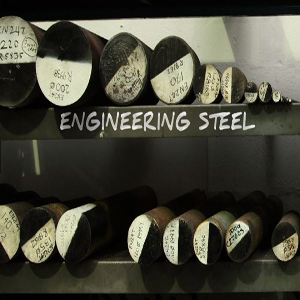Engineering Steels contains either nickel, chromium, molybdenum or carbon, or combinations of them, providing high strength, toughness, fatigue strength and hardenability. The material is used to make critical parts of automobiles, construction machinery and industrial machinery.
Engineering Steels are essentially wrought steels designed for mechanical and allied engineering applications. These require critical and often stringent levels of elasticity, strength, ductility, toughness and fatigue resistance. In some cases, it may also require resistance to high or low temperatures, corrosive and other aggressive environments.
Applications of advanced high-strength steels, sometimes called ultra-high strength steels, are finding their way into current production vehicles all over the world because of their unique qualities that allow for lighter weight parts that are as strong as or stronger than conventional steel counterparts. This steeluniversity.org module includes a special section designed to build a better understanding of advanced high-strength steels and its properties.
There is a great variety of engineering steel types and shapes. Each is carefully tailored to meet specific user requirements, in terms of properties and performance and in some cases in order to facilitate the manufacturing and fabrication techniques. These techniques are then used to make components or parts. The composition, process route and heat treatment parameters are carefully selected in order to meet the customers’ needs.
The subtopics in this module explore a wide range of engineering steels, from plain carbon steels to high alloy, ultra high strength steels. In each case, the composition and processing methods used to ensure the steel is suitable for its intended application are examined.
The engineering industry is heavily dependent on steel, and it’s used in a huge range of applications from shipbuilding, the automotive industry, architecture and machinery building.
Major Grades :
| Carbon steel | Carbon steel is most extensively used as engineering steel, and its hardness can be controlled by adjusting the carbon content and performing thermal treatment. |
| Alloy steel | Alloy elements are added to enhance strength, toughness, fatigue strength and hardenability to manufacture alloy steel. |
| Tough and hard steel featuring extremely high viscosity is manufactured by applying quenching and tempering processes. | |
| Case hardening steel featuring high wear resistance and shock resistance is manufactured by carburization. | |
| H-type steel guarantees the hardenability of the steel materials mentioned above. | |
| Free Cutting Steel | Machinability is improved by adding elements such as sulfur or lead to manufacture free cutting steel. |
What is Free Cutting Steels or What are Free Cutting Steels ?
Free Cutting Steels also known as Free Machining Steels are those steels which form small chips when machined. This increases the machinability of the material by breaking the chips into small pieces, thus avoiding their entanglement in the machinery. This enables automatic run of the equipment without human interaction. Free cutting steels with lead also allow for higher machining rates. As a thumb rule, free cutting steel normally costs 15 % to 20 % more than the standard steel. However this is made up by increased machining speeds, larger cuts, and longer tool life.
Free Cutting Steels Available with us Easily or in Stock:
| Equivalent Grades | ||||||
| Internal Standard | BS | DIN | IS | EN | SAE / AISI | JIS |
| EN 1A | 22Mo7 | 9SMn29 | 11C10S25 | EN1A | 1213 | SUM22 |
| EN 1APb | 22Mo7Pb | 9SMnPb36 | - | EN1APB | 12L14 | SUM24L |

